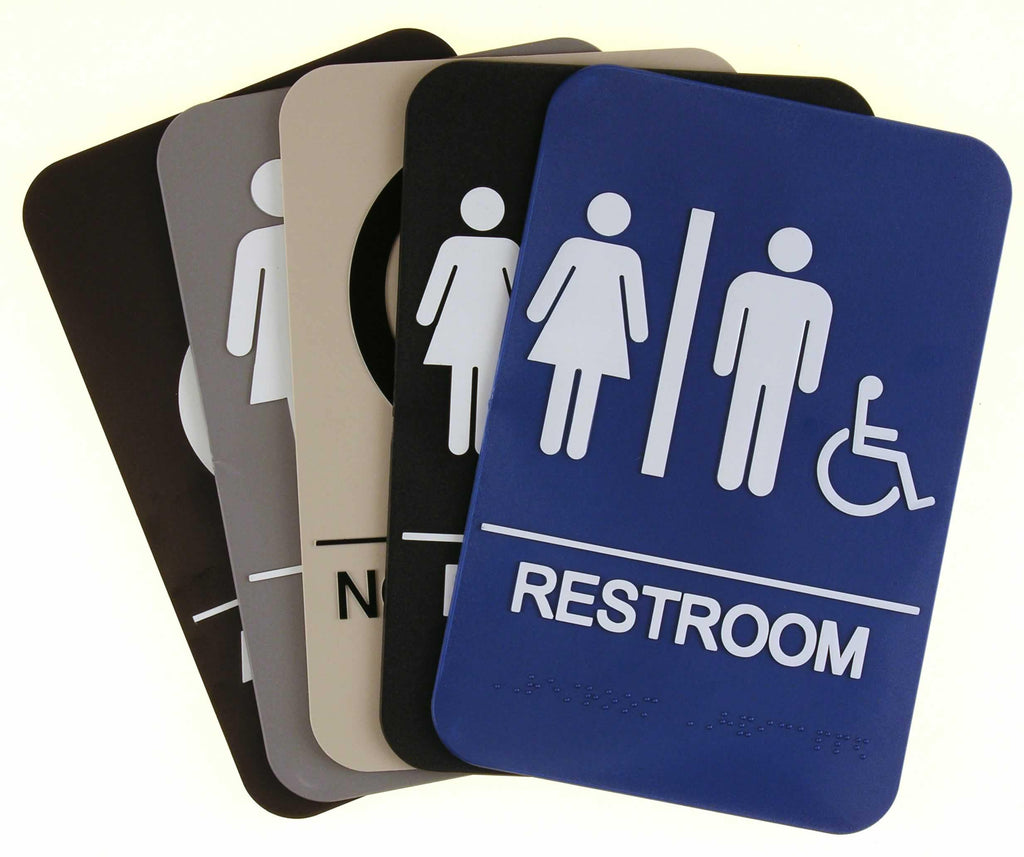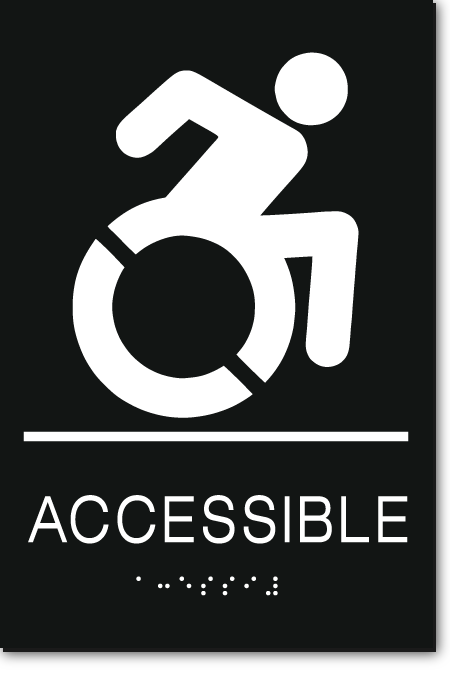Exploring the Trick Attributes of ADA Indications for Enhanced Availability
In the realm of availability, ADA indicators offer as silent yet effective allies, making sure that rooms are inclusive and accessible for people with disabilities. By incorporating Braille and tactile elements, these indications break barriers for the aesthetically impaired, while high-contrast color systems and understandable typefaces cater to diverse aesthetic requirements.
Relevance of ADA Compliance
Guaranteeing compliance with the Americans with Disabilities Act (ADA) is essential for promoting inclusivity and equivalent access in public spaces and workplaces. The ADA, established in 1990, mandates that all public centers, employers, and transportation services accommodate people with disabilities, guaranteeing they enjoy the exact same civil liberties and chances as others. Compliance with ADA criteria not just meets lawful responsibilities yet also enhances a company's reputation by demonstrating its commitment to variety and inclusivity.
One of the key aspects of ADA conformity is the application of easily accessible signs. ADA signs are created to ensure that individuals with impairments can quickly navigate through buildings and rooms.
Moreover, adhering to ADA policies can minimize the danger of legal repercussions and prospective fines. Organizations that fall short to follow ADA guidelines may face suits or penalties, which can be both damaging and monetarily burdensome to their public picture. Therefore, ADA conformity is essential to fostering a fair atmosphere for everyone.
Braille and Tactile Components
The incorporation of Braille and responsive elements into ADA signs embodies the principles of ease of access and inclusivity. These attributes are essential for people that are blind or aesthetically damaged, allowing them to browse public spaces with higher independence and confidence. Braille, a tactile writing system, is vital in providing created info in a style that can be conveniently regarded with touch. It is commonly positioned beneath the matching text on signs to ensure that individuals can access the information without visual assistance.
Tactile components expand past Braille and consist of elevated icons and characters. These elements are made to be noticeable by touch, enabling individuals to identify room numbers, toilets, departures, and various other critical areas. The ADA establishes certain standards relating to the size, spacing, and positioning of these tactile aspects to maximize readability and make sure uniformity across various atmospheres.

High-Contrast Shade Plans
High-contrast shade plans play a critical function in improving the visibility and readability of ADA signs for people with visual problems. These plans are necessary as they take full advantage of the difference in light reflectance in between message and history, guaranteeing that indicators are easily noticeable, even from a range. The Americans with Disabilities Act (ADA) mandates making use of particular color contrasts to fit those with limited vision, making it an essential element of conformity.
The efficiency of high-contrast colors depends on their capacity to stand out in special info various lights problems, consisting of dimly lit atmospheres and locations with glow. Generally, dark message on a light Visit Website history or light message on a dark history is employed to accomplish optimum comparison. As an example, black message on a yellow or white history supplies a plain aesthetic difference that aids in quick recognition and understanding.

Legible Fonts and Text Dimension
When taking into consideration the design of ADA signs, the option of understandable typefaces and ideal message dimension can not be overemphasized. The Americans with Disabilities Act (ADA) mandates that typefaces should be not italic and sans-serif, oblique, manuscript, extremely ornamental, or of uncommon form.
The size of the message also plays a pivotal function in access. According to ADA standards, the minimum message elevation need to be 5/8 inch, and it must boost proportionally with viewing range. This is especially important in public areas where signage needs to be read quickly and precisely. Uniformity in text dimension adds to a natural visual experience, assisting people in navigating atmospheres successfully.
Moreover, spacing in between letters and lines is indispensable to readability. Adequate spacing avoids personalities from appearing crowded, enhancing readability. By adhering to these requirements, designers can significantly improve accessibility, making sure that signs offers its intended function for all individuals, no matter of their visual capacities.
Effective Placement Techniques
Strategic placement of ADA signage is vital for making the most of availability and making sure conformity with legal requirements. ADA hop over to here guidelines specify that signs ought to be mounted at a height in between 48 to 60 inches from the ground to ensure they are within the line of sight for both standing and seated individuals.
In addition, signs need to be put nearby to the lock side of doors to enable very easy identification before access. Uniformity in indication placement throughout a center boosts predictability, lowering confusion and improving overall customer experience.

Conclusion
ADA signs play an important role in promoting availability by incorporating features that address the needs of people with impairments. Integrating Braille and tactile elements guarantees vital details comes to the visually impaired, while high-contrast color design and clear sans-serif font styles boost presence across various lighting conditions. Effective placement techniques, such as suitable placing heights and tactical places, further help with navigation. These components jointly promote a comprehensive environment, emphasizing the relevance of ADA compliance in ensuring equivalent gain access to for all.
In the realm of availability, ADA signs serve as quiet yet effective allies, making sure that areas are comprehensive and accessible for people with disabilities. The ADA, established in 1990, mandates that all public facilities, employers, and transport solutions fit individuals with impairments, guaranteeing they appreciate the very same legal rights and opportunities as others. ADA Signs. ADA indicators are created to guarantee that individuals with specials needs can easily browse with rooms and buildings. ADA guidelines specify that signs need to be installed at an elevation in between 48 to 60 inches from the ground to guarantee they are within the line of sight for both standing and seated individuals.ADA indicators play an important function in promoting accessibility by incorporating attributes that address the needs of people with impairments